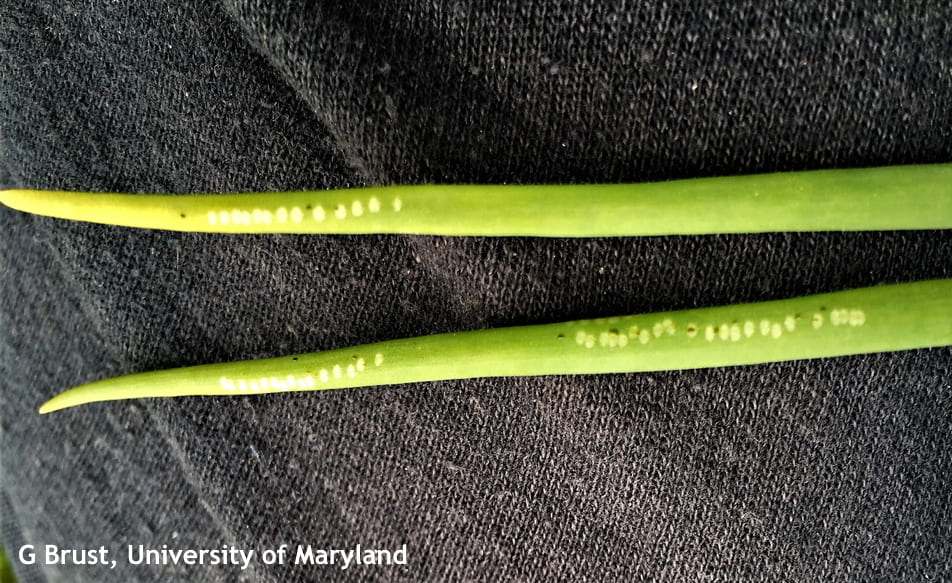Jerry Brust, IPM Vegetable Specialist, University of Maryland; jbrust@umd.edu
If you grow leeks or onions or other Allium species, now and for the next few weeks is the time to watch for the tell-tale marks left by Allium leaf miner. Allium leaf miner, Phytomyza gymnostoma, tell-tale marks consist of several small round white dots (made by the female’s ovipositor) in a row that appear on the middle towards the end of leaf blades (Fig. 1) of their preferred hosts of leeks, onions, garlic and other Allium species. Spring crops are usually not as hard hit as fall crops especially when looking at leeks, but this pest has been steadily increasing its geographical range each year and its damage potential. If you had some infestation last year you will especially want to be looking for the signs of this pest.
To go over recommendations for this pest: New transplants or seedings of onions, leeks or garlic should be watched closely for the tell-tale signs of the fly’s damage. When eggs hatch the larvae at first mine leaves and then move down to the bulbs and leaf sheathes where they feed and eventually pupate. Pupae will undergo a summer aestivation (type of hibernation because temperatures are too warm for them to be active) and only emerge again in late September. You can cover any just-transplanted Allium planting with a row cover (but don’t wait too long after transplanting) to keep the flies off or if needed treat with insecticides. Penn State has found efficacy using neonicotinoids (Scorpion, Assail), diamides (Exirel), spinosyns (Entrust, which is OMRI-labelled), and pyrethroids. A spreader-sticker is recommended when applying insecticides to any Allium crop. Penn State has good information about the pest which can be found at Penn State Allium Leafminer.
Figure 1. Onion leaf blades on their side showing round white dots made by female Allium leaf miner

